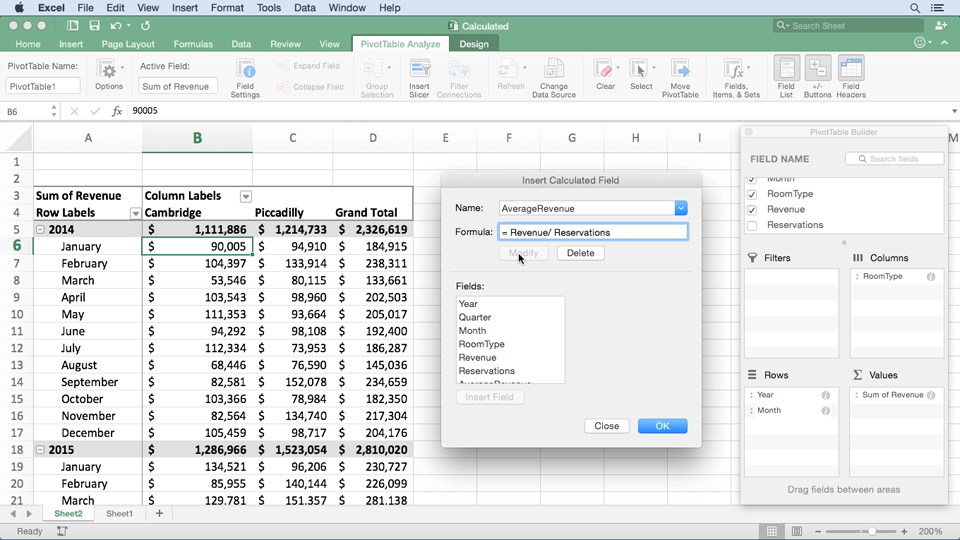

Show Data As: Select how you want to show the data from the pop-up menu. Summarize By: Choose which type of calculation to use. The properties displayed are for the field name of the button you clicked:įield Name (Optional): Type a new field name. Click the information button to display the PivotTable Field dialog. There’s a little information button at the right end of each field name in the panels at the bottom of the PivotTable Builder.

You can change the column names, calculations, and number formats provided by the PivotTable Builder. You can filter the Field Name list by typing field names in the search box in the Pivot Table Builder dialog.ĭrag fields from one pane to another to generate new pivot table variations. Selecting and deselecting the field names includes or excludes the columns from the pivot table.Ĭlicking the pop-up buttons within the pivot table displays Filter dialogs appropriate for the data type in your pivot table. Make sure there’s enough room so your PivotTable doesn’t overlap existing cell ranges.ĭrag field names from the Field Name section at the top to the panes below. The cell will be the upper-leftmost corner of your PivotTable. New Worksheet: If selected, adds a new sheet to the workbook and places your PivotTable in Cell A1 of the new worksheet.Įxisting Worksheet:Choose a cell on your worksheet.
#EXCEL FOR MAC POWER PIVOT MAC OS X#
Use an E xternal D ata S ource:Displays the Mac OS X ODBC dialog. If you didn’t start with a table or range, you can select a data range or table using the mouse. Location: If you performed Step 1, your table or range is already filled in for you. Alternatively, on the Ribbon’s Tables tab, go to the Tools group and click Summarize with PivotTable. (Optional) Select a cell in your data range or table.Ĭhoose Data→PivotTable. If you’re PivotTable aficionado, you will be in seventh heaven with the new PivotTable capabilities in Office 2011 for Mac. In Excel 2011 for mac, a PivotTable is a special kind of table that summarizes data from a table, data range, or database external to the workbook. Today, we are excited to announce the first step in a journey to support Power Query in Excel for Mac. These tools, based on Power Query technology, enable you to easily connect, combine, and shape data coming from a variety of sources.
#EXCEL FOR MAC POWER PIVOT HOW TO#
I'll begin by showing you how to create a Pivot Table from data already in your Excel workbooks.Įxcel 2016 for Windows introduced a powerful set of Get & Transform Data tools. In this course, I'll show you how to use Pivot Tables to gain valuable insights from your organization's data. Welcome to Excel 2016 for Mac: Pivot Tables in Depth.

This means you can now create interactive dashboards with pivot tables, charts, and slicers on the Mac.


 0 kommentar(er)
0 kommentar(er)
